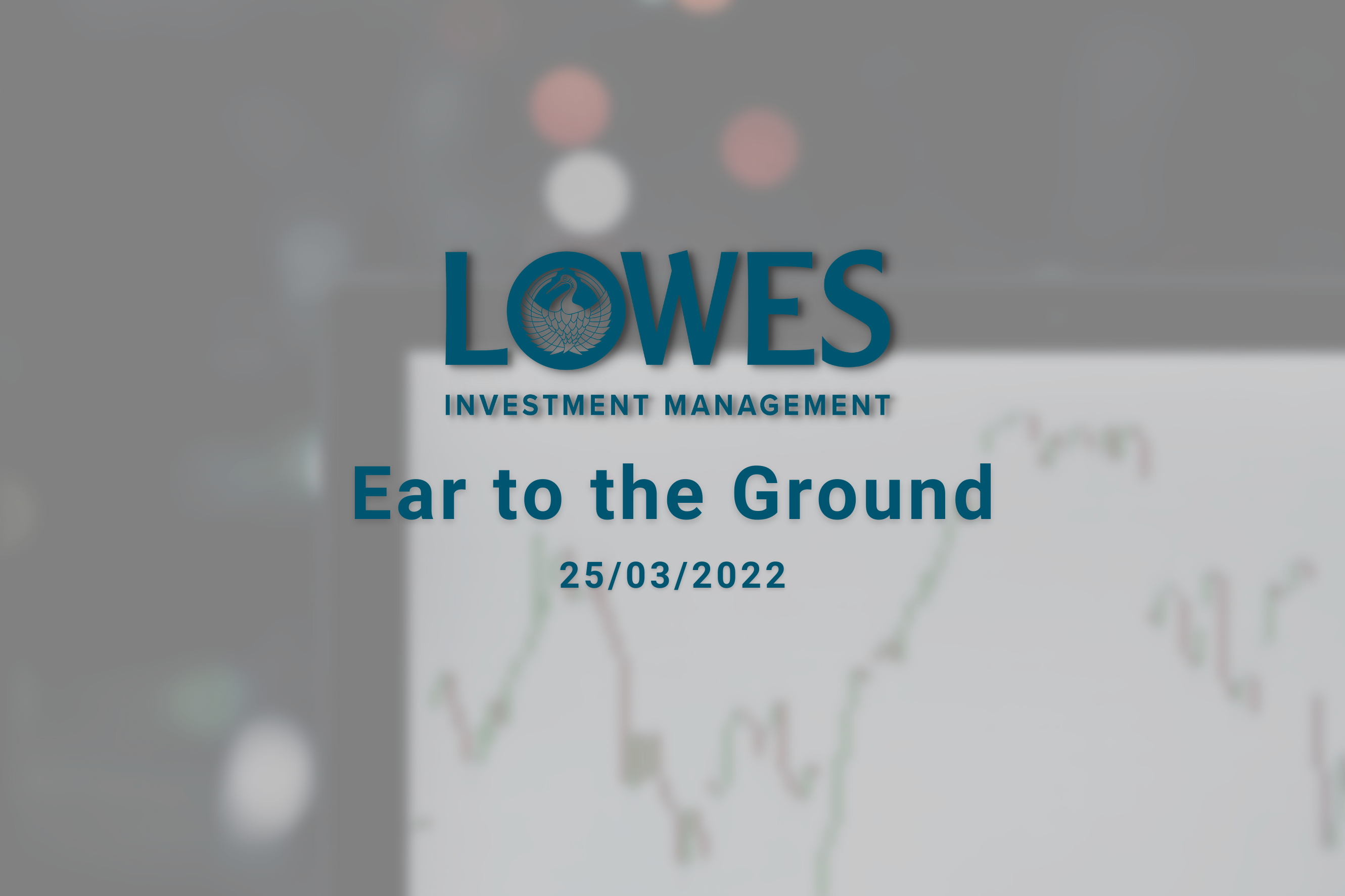Ear to the ground
25 March 2022

This week saw the release of UK inflation figures, with them continuing their upward march. The consumer price index rose by 6.2% in February, year on year. This was above market forecasts of 5.9% and represented the highest rate since March 1992. Rising food and energy costs continued to be key drivers. RPI meanwhile came out at 8.2%.
This week also saw the release of the latest economic forecast for the UK from the Office for Budget Responsibility. They expect the economy to grow by 3.8% this year. Whilst clearly still positive, this is some way below their previous forecast of 6%. As a net energy importer, with a high degree of dependence on gas and oil, the higher global energy prices are expected to weigh heavily on the UK economy. They also forecast that growth slows further in 2023 to 1.8% as the rebound from the pandemic restrictions fades.
The OBR also increased their forecast for peak inflation. In their October 2021 forecast they believed that it would occur in Q2 of this year at 4.4%. The timing has now being pushed back to Q4, where they expect a higher peak rate of 8.7%. The OBR warned that this could weigh heavily on living standards over the next 12 months.
Yields continue to rise as a consequence, with further flattening of the yield curve being seen. In the US the yield on the 10 year Treasury is now around trading around the 2.35% mark. The rise in yield at the short end however has been greater. For example, spread between the 30 and 5 year Treasury is now down to under 0.12%.
The more closely watched 10-2 year yield curve has a spread of only 0.21%. But why does this matter? Research from Bank of America shows that inversion in this curve has preceded the last 8 recessions and 10 of the last 13. What it doesn’t provide however is a guide to timing. Data from True Insights, fred.stlouisfed.org and NBER shows that the lag between an inversion and a US recession, on the last 6 occasions, has varied widely, from between 5 months to 34 months.
Longer term the rise in yields however is providing one positive for investors longer term in that the amount of negative yielding debt is falling rapidly. Having at one time being in excess of $18trn, the figure is now hovering around the $3trn mark.
Higher fixed income yields, from an asset allocation perspective, doesn’t just have implications for fixed income. The recent rise in US Treasury yields means that the equity risk premium has seen a sharp fall, standing at c. 2.6%. Whilst this is still positive, there will be investors who are already asking the question at what level does the yield on a 10 year Treasury yield become attractive enough to consider rotating.
With interest rates and inflation on the rise it is therefore a little strange to see the federal Reserve balance sheet still on the rise. Whilst they have said that they will start to reduce it, they appear to be delaying for the time being. There is potentially, however, a lot to do!
This article is for information purposes only and should not be construed as advice. We strongly suggest you seek independent financial advice prior to taking any course of action.
The value of this investment can fall as well as rise and investors may get back less than they originally invested. Past performance is not necessarily a guide to future performance. The Fund is suitable for investors who are seeking to achieve long term capital growth.
The tax treatment of investments depends on the individual circumstances of each client and may be subject to change in the future. The above is in relation to a UK domiciled investor only and would be different for those domiciled outside the UK. We strongly suggest you seek independent tax advice prior to taking any course of action.
Subscribe Today
To receive exclusive fund notifications straight into your inbox, please complete this form.